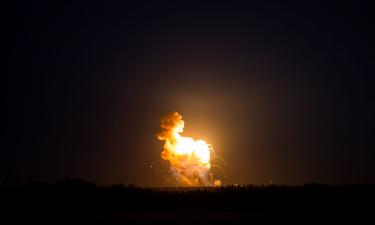Russia and US to build the underground helium reactor
Four-module helium reactor GT-MGRT that can solve energetic problems is to be put into operation in 2012-2015
 Power engineering presents the greatest problem for civilization. Energy problems of today determine ways of economic development. Braniacs are trying their best to relieve the human kind of the energetic hunger in the future, when the energy consumption increases inevitably and incredibly. Energetic programs of the world's leading countries have priority on nuclear power engineering with several perspective projects. In the US several nuclear reactors were chosen in Generation Four program. One of the most interesting projects is that of the helium reactor. Such project is also realized by Russia that got closer than other countries to the helium reactor, according to experts. That is why the US suggested Russia to make a joint project of helium reactor.
Power engineering presents the greatest problem for civilization. Energy problems of today determine ways of economic development. Braniacs are trying their best to relieve the human kind of the energetic hunger in the future, when the energy consumption increases inevitably and incredibly. Energetic programs of the world's leading countries have priority on nuclear power engineering with several perspective projects. In the US several nuclear reactors were chosen in Generation Four program. One of the most interesting projects is that of the helium reactor. Such project is also realized by Russia that got closer than other countries to the helium reactor, according to experts. That is why the US suggested Russia to make a joint project of helium reactor.
Helium is the second common element of the universe after hydrogen. It is found on Earth in tiny quantities – 0,003 milligrams per kilogram of substance. The universe contains 23 percent of helium, though. Helium is found mostly in granite rocks and evolves as a result of decomposition of uranium and radioactive elements. Helium is the main construction material for the Sun. Until recently it was used mostly in balloons. At the moment it is used in industrial equipment. On space aircrafts it is used in the fuel supply system under high pressure.
Nobel Prize winner Richard Feynman thought that super fluid helium could help in solving the latest task of classical physics related to the estimation of the turbulence model. Super fluid helium was discovered in 1937 by Pyotr Kapitsa, who received the Nobel Prize for his research. Another Nobel Prize laureate explained the activity of the super fluid helium.
In 1970s the Soviet Union started working on high temperature helium reactors of nuclear energotechnological stations for chemical industry and iron and steel industry. The basis for the reactors turned out to be projects of rocket hydrogen engines, which are unfortunately dallied off, although experimental nuclear rocket engines showed effectiveness during hydrogen heating up to 3000 C.
In 1990s experts from Kurchatov Institute and Afrikantov Experimental Machine Building Design Bureau in Nizhniy Novgorod where reactors for nuclear submarines and floating nuclear powered stations are constructed suggested the project of high temperature reactor with helium heat carrier. Helium has great advantages as a heat carrier. It is chemically inert and does not cause corrosion. It does not change aggregate state. It does not influence neutron multiplication factor. Finally, hot helium is easily directed right into the gas turbine.
The project entitled GT-MGR, which was joined by the Oak Ridge National Laboratory, American company General Atomics, French company Framatome and Japanese company Fuji Electric gives an opportunity to create a new type of ecologically clean nuclear powered stations with unique characteristics. Those will include ability to generate heat at the temperatures not higher than 1000 C with high level of security to American measure. The drafts of reactor and nuclear power station are already finished. Helium reactor makes it possible to increase the efficiency index up to 50 percent. It is a breakthrough taking into account present reactors’ efficiency index of 32 percent. Reactor and turbo generator will be placed underground. The structure of helium nuclear power station is much simpler than that of the traditional ones.
According to the academician Nikolay Ponomarev-Stepnoy helium reactors are of great interest for isolating hydrogen and hydrogen power engineering, which is one of the most perspective ways of solving energetic problems. Besides, helium reactors can be used for water desalination, technological processes in chemical, oil-refining and metallurgical industries. Using helium reactors in municipal economy needs increasing of their capacity. And there are no great difficulties in this field.
Uranium oxide and carbide will be used as fuel for reactor. Oxide of weapon-grade plutonium can be also used as fuel, which makes this project especially attractive as it may solve the problem of its utilization. Spent fuel is in such condition that it cannot return to the weapon-grade cycle.
Four-module reactor GT-MGRT is to be put into operation in 2012-2015. Its thermal power will be 600 megawatts; electrical power will be 285 megawatt. Its expected service life is 60 years.
Sergey Leskov
Subscribe to Pravda.Ru Telegram channel, Facebook, RSS!




